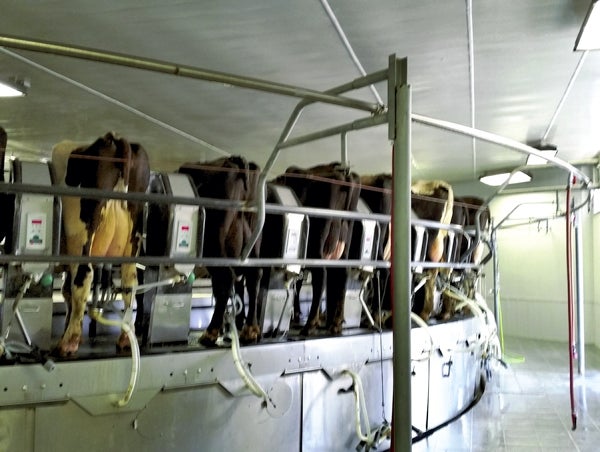Darrell Blackwelder: An udderly fascinating dairy farm
Published 12:02 am Friday, July 24, 2015

- Darrell Blackwelder/For the Salisbury Post These South Dakota cows calmly step on a milking carousel whenever they feel like it, then move off to feed.
I’m going to deviate from our moans about hot weather, bugs and plant diseases and talk about an agricultural tour last week at a The National Agriculture Agents Meeting in South Dakota held in Sioux Falls, the heart of dairy country.
My wife and I, along with 30 other extension agents and family from across the nation, traveled to what I thought would be a typical, ho hum dairy farm tour. After an hour of observing nothing but corn fields and giant windmills on both sides of the interstate on the way, I surmised this wasn’t going to be a typical dairy tour.
Most of the dairies are located a short distance along the I-29 corridor which runs parallel to edges of South Dakota, Minnesota, Iowa and Nebraska. The area is known as The Dairy Corridor because it encompasses over 400 working, high impact dairies. Minnesota alone has more than 4,000 dairy farms with 460,000 dairy cows. What is also interesting about this area is that the number of dairy farms are continuing to shrink, while the actual numbers of cattle continues to increase,substantially.
The tour highlighted three dairy farms. By far the most interesting was a 250 dairy operation run by a man and his wife that used robots to milk and feed the cattle. The dairy cattle were not touched by humans during the milking process.
Milk laden dairy cattle wander at their leisure to a milking area where a robotic milking apparatus cleaned the udder, securely placed the milking apparatus and pumped the milk.
Each cow’s udder is scanned electronically and information is embedded in a central computer for the daily milk. The milk is then diverted to a large holding tank with important information electronically recorded, all within a matter of minutes.
The robotic milking unit is a continuous operation 24 hours a day, seven days a week. After the cows are milked, they gently filter to outdoor feeding stalls with automated back scratcher/massager and then to a trough of tasty, high protein silage.
A “Star Wars” like R2D2 unit moves silage automatically to the contented bovines. One cow had to be placed on notice because she was taking advantage of the system with 12 milkings a day.
If there’s a problem with the system, the computer alerts the operator via smart phone to resolve the problem. They have minor shutdowns only about once a month.
Another dairy had a high tech carousel-type system milking about 40 dairy cows in a just a few minutes. The cows patiently waited their turn getting off and on the continuous milking apparatus as the machine simultaneously milked, turned and recorded data all within a 9 minute ride. The contented cows seemed to sway back and forth with the soft Latin music as they gently turned for their milking.
Growers not only used innovative methods of milking but also put much of the natural nutrients back into the soil to help fertilize their crops. Some farms use fine sand (sugar sand) to provide easy comfort bedding for lactating cows. Other dairy operations use recycled, squeezed manure as a bedding material.
The visiting agents also learned that processed milk (ice cream) continues to be a very important industry. Students at South Dakota State University excel in development of high quality ice cream, cheese and other dairy products.
Graduating students in dairy science have 100 percent placement with above average salaries. A noted quote from the dairy processing manager during the tour: “It doesn’t matter if the country is in a deep recession or not, people will still want and will pay for good quality ice cream.”
Darrell Blackwelder is the County Extension Director in Rowan County with horticulture responsibilities with the North Carolina Cooperative Extension Service in Rowan County. Learn more about Cooperative Extension events and activities by calling 704-216-8970 Facebook or online at www.rowanextension.com




